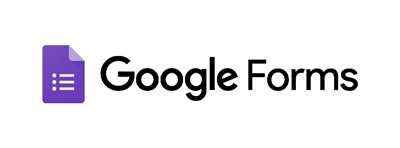What is Google Forms
Google Forms is a free and user-friendly web-based form builder that allows you to create custom surveys, quizzes, questionnaires, and other forms to collect and analyze data from respondents. Whether you want to gather customer feedback, conduct market research, or create an online poll,
Google Forms provides a range of features and templates to help you get started quickly and easily. To create a form in Google Forms, sign in to your Google account and navigate to the Forms section. You can choose from various pre-made templates or start from scratch by adding your questions and fields. Google Forms offers a range of question types, including multiple-choice, checkboxes, dropdowns, and more, and the ability to add images, videos, and sections to your form. You can also customize the look and feel of your form by choosing from various themes and colors, or by adding your branding and logos.

Once you've created your form, you can easily share it with others by generating a link, embedding it on your website or blog, or sharing it via social media or email. You can also set up email notifications to receive alerts when someone responds to your form, or use Google Sheets to automatically collect and store your form responses for analysis and reporting.
How Google Forms Can Streamline Your Workflow
Google Forms is more than just a form builder. It's a powerful tool that can help you streamline your workflow and automate your data collection and analysis. Here are just a few ways that Google Forms can help you save time, increase efficiency, and improve your workflow:
Automate data collection: With Google Forms, you can set up your form to automatically collect responses and store them in a Google Sheet. This means you don't have to manually enter data into a spreadsheet or database, saving you time and reducing the risk of errors. You can also set up email notifications to receive alerts when someone responds to your form, so you can stay on top of new submissions without constantly checking your form.
Eliminate paperwork: With Google Forms, you can eliminate the need for paper forms and physical records. This saves you space, reduces clutter, and makes it easier to share and access data. With Google Forms, you can easily share your form with others via a link, embed it on your website or blog, or share it via email or social media. You can also access your data from anywhere, as long as you have an internet connection.
Customize and personalize your forms: Google Forms offers a range of customization options that allow you to personalize your forms and make them more engaging for your respondents. You can add images, videos, and sections to your form and choose from various themes and colors. You can also add your own branding and logos to your form to make it consistent with your brand or website.
Integrate with other tools: Google Forms integrates seamlessly with other Google tools, such as Google Sheets and Google Drive. This means you can quickly transfer your data to other tools for further analysis or reporting. You can also use third-party integrations, such as Zapier or Slack, to further automate your workflow and connect your form with other apps and services
Why Choose FormBot Instead of Google Forms?
While Google Forms is a popular and reliable tool for creating online forms, there may be better fits for some. Here are some reasons why you might want to consider using FormBot instead of Google Forms:
More customization options: FormBot offers a broader range of customization options than Google Forms. With FormBot, you can add your own branding, custom fields, and conditional logic to your forms. This means you can create forms that look and feel like your brand, and collect the exact data you need from your respondents. FormBot also offers advanced features like image and file uploads, e-signatures, and payment integrations.
Better user experience: FormBot is designed to provide a seamless and user-friendly experience for both form creators and respondents. Unlike Google Forms, which can be limited in terms of design and functionality, FormBot offers a range of templates, themes, and layouts to choose from. This allows you to create visually appealing forms, easy to navigate, and optimized for mobile devices. FormBot also provides real-time previews and testing, so you can see exactly how your form will look and function before publishing it.
More advanced features: FormBot offers a range of advanced features that are not available in Google Forms. For example, FormBot provides real-time analytics and reporting, so you can track responses and generate insights as they happen. FormBot also offers secure data storage and compliance with data privacy regulations, which can be critical for businesses and organizations that handle sensitive information. Additionally, FormBot integrates with various third-party tools and services, including Zapier, Slack, and Salesforce, which can help you automate your workflow and streamline your data collection and analysis.
